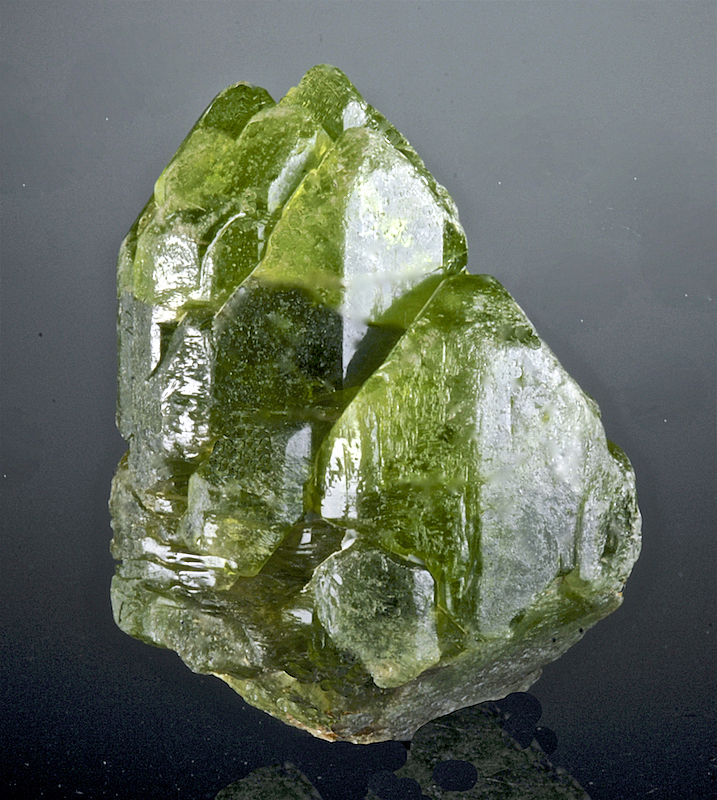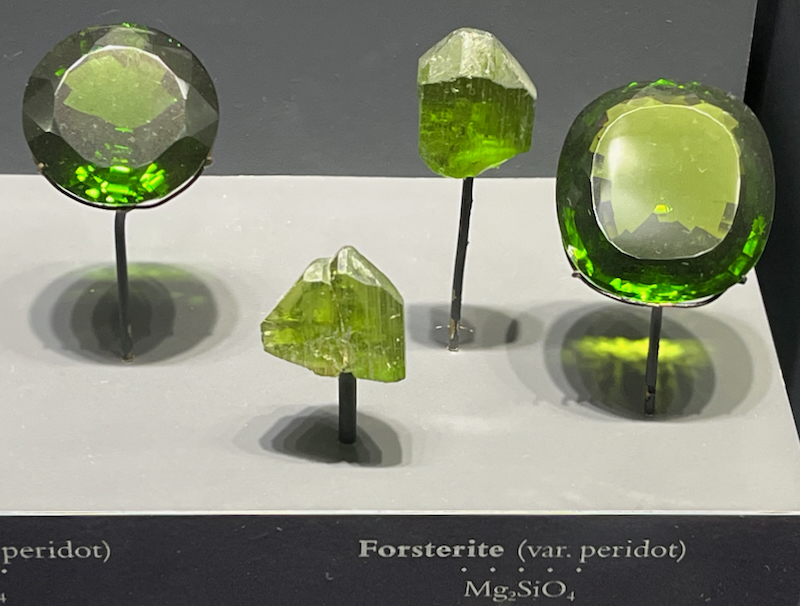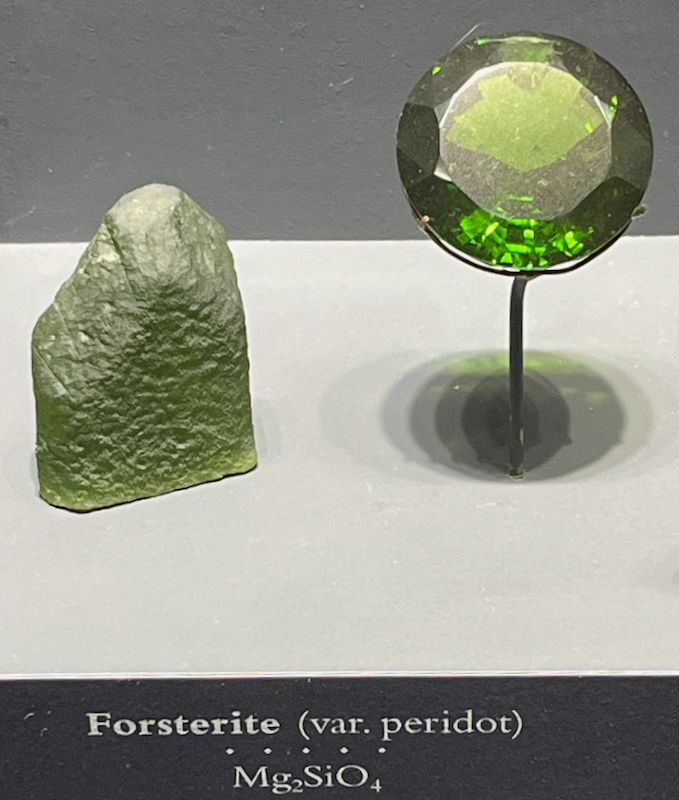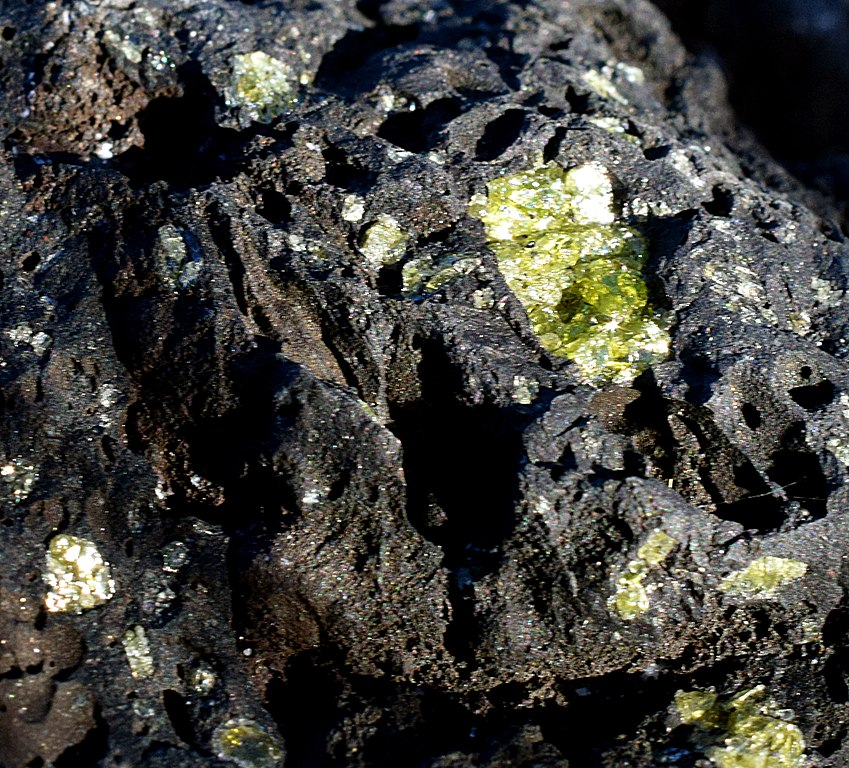Peridot
Assuming the volcano isn’t currently erupting, if you go to a volcanic crater, like in Hawaii Volcanoes National Park, and look at the lava rocks there, there’s a good chance you’ll see small bubbles containing a yellow-green glassy mineral. That’s forsterite, the very science-y name for gem-quality olivine, also known as the gemstone peridot. Along with volcanoes, forsterite can also form in places where you find marble or serpentine. If you could get all the way down there, it even forms in the Earth’s mantle in large quantities. Given how it occurs, there’s potentially a lot of it all over the planet, but finding it in a big enough size for making jewelry is not so easy. If you’re near a volcano, usually it’s in small bits. Like vesuvianite, forsterite was first officially found at a volcano in Italy, called Mt. Somma (next to Mt. Vesuvius), but it was named after a guy named Forster–sorry, Mt. Somma, there’s no somma-ite!
| Formula | Group or Type | Shape | Hardness | Specific Gravity | Streak | Luster |
|---|---|---|---|---|---|---|
| Mg2(SiO4) | — | Orthorhombic | 6.5–7 | 3.27–4.32 | White | Vitreous to greasy |




